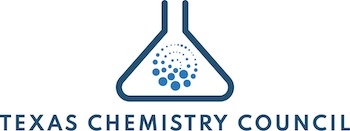Complete Story
08/20/2024
Storm Disruptions, Feedstock Costs Drive Up Resin Prices
Plastics News | Frank Esposito
A midsummer price increase for polyethylene and polypropylene resins has surprised some buyers.
North American prices for PE and PP resins each climbed an average of 5 cents per pound in July, according to buyers and market watchers contacted by Plastics News. PET bottle resin also bumped up by 1 cent.
Supply concerns over brief outages caused by Hurricane Beryl, which hit the Houston area in early July, played a role in the price hikes.
"The long-term outlook does not foresee the sustainability of any of the new increases without an event," he added in a market report. "Feedstocks will not drive prices, as natural gas and ethane inventories remain ample and low cost."
Burns also said reduced PE exports to China "will challenge suppliers' inventory levels, as record production levels replace the short-term outages from Hurricane Beryl."
North American PE demand is up 3-6 percent so far in 2024, according to Esteban Sagel, principal with Chemical & Polymer Market Consultants in Houston.
"The U.S. economy is on stronger footing than a year ago, and PE is a leading indicator of the direction of the economy," Sagel said. "Processors also have been restocking this year after waiting for prices to bottom out in the second half of 2023."
Sagel added that U.S. PE makers "continue to enjoy a tremendous cost advantage vs. the rest of the world, allowing them to shed any excess into the export market." He said processors may be building inventory as a hedge against issues related to hurricane season.
"The July [PE] price increase was implemented despite evidence of softening export demand," Barry added. "I think the production hit from Hurricane Beryl, plus a lot of pre-buying by downstream customers, was just enough to push the increase through."
Robin Chesshier, founder of Plastic Experts International in Fort Worth, Texas, agreed that the 5-cent July PE price hike came as a bit of surprise.
"For PE, [the increase] is more of a one-time thing, as domestic demand has been weak, and an increase could generate more demand destruction," Chesshier said.
She added that another Gulf Coast hurricane could lead to higher prices, but otherwise "fundamentals are more supportive of lower prices."
Michael Workman, business development director with Resin Technology Inc. in Fort Worth, added that the July PE hike could be an isolated event.
Under normal market conditions, it's difficult to achieve higher prices in summer months, said Howard Rappaport, a market analyst with StoneX in New York. But he added that several factors — including new capacity from Baystar, Shell Chemical and Nova Chemicals — have allowed that to happen in 2024.
Looking to the rest of the year, Rappaport said that the U.S. economy "is showing signs of a slowdown ahead of a contentious election season," and that there are some indications that China's PE consumption rates are below expectations, which would affect export sales.
Exports of PE resin from the U.S. and Canada reached an all-time high of 45 percent of total production in 2023. The export rate was slightly higher at 46 percent in the first half of 2024. By comparison, exports accounted for 23-28 percent of North American PE production in 2015-18 and 33-39 percent of that amount in 2019-22.
The July 5-cent increase for PP marked the second straight monthly price increase for that material, following a 2-cent increase in June.
Those moves matched price changes seen for polymer-grade propylene (PGP) monomer feedstock. Combined with previous increases and decreases, PP prices now are up a net of 5 cents so far in 2024.
Those factors are keeping PP prices relatively high, Sagel added, even though domestic demand could be down by double-digit rates this year.
PetroChem Wire's Barry said normal production from PDH-type PGP units could increase monomer inventories and help balance the market in August. Chesshier at PEI also said that better PGP supply "is on the horizon" and that supply improvement on PGP could help lower PGP and PP prices.
PET bottle resin prices also were up 1 cent per pound in July, marking the second straight month that they increased by that amount. The price hike followed higher prices for raw materials, including paraxylene and purified terephthalic acid, according to an industry source contacted by PN.

